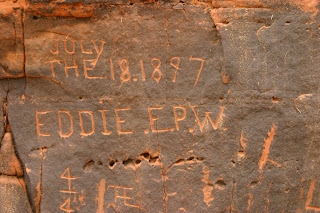
Canyons, spires, and flat-topped tables the serrated badlands terrain started eroding about 500,000 years ago. Given another 500,000 years and there will be nothing but mixed grass prairie.

We did not pick the best day for our visit to the park. The sun did brake through the clouds from time to time giving us some great contrast.

Since we were coming from Hot Springs we came in a back way across the Pine Ridge Indian Reservation.

The road across the north part of the park is not paved making for a messy trip, but our friend Bill McNew would be proud of the van even if it is not 4 wheel drive.
Looking across the badlands you see some formations reminiscent of Bryce canyon. Different geology but erosion and disposition is the same.




From sea bottom to yellow soil, later a river flood plain then sandstone deposits. Finally 28 to 30 million years ago a thick layer of volcanic ash was deposited. Volcanic eruptions to the west continued to supply ash by wind and water.

So 75 million years of layers and 1 million years of erosion and its strung out from here to the gulf of Mexico.
Since we entered via Sage Creek Road we came across Roberts Prairie Dog Town. We also saw a Bison, but only one at quite a distance.

These guys on the other hand were all over the place. Bighorn Sheep, all have horns but the females do not have the larger horns the the males have.



















































